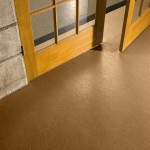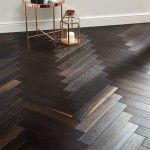Can You Install LifeProof Flooring Over Concrete?
LifeProof flooring, known for its durability and water-resistance, is a popular choice for homeowners seeking a low-maintenance and stylish flooring solution. One common question that arises is whether this type of flooring can be installed directly over concrete. The answer, in most cases, is yes. However, there are crucial factors to consider and steps to take to ensure a successful and long-lasting installation.
Preparing the Concrete Subfloor for LifeProof Flooring
The foundation of any successful flooring installation lies in properly preparing the subfloor. Concrete subfloors, while sturdy, often require specific attention before laying down LifeProof flooring. The following steps are crucial for achieving a smooth, level surface:
1.
Clean and Dry:
Thoroughly clean the concrete surface using a stiff-bristled broom and a damp mop. Remove any debris, dirt, or dust that could compromise the adhesion of the flooring. Ensure the concrete is completely dry before proceeding. 2.Leveling:
Uneven concrete can create gaps and unevenness in the LifeProof flooring, leading to issues with installation and aesthetic appeal. Assess the levelness of the concrete using a level or a straight edge. If necessary, use a self-leveling compound to fill in low spots and create a smooth, even surface. 3.Moisture Barrier:
Concrete is porous and can sometimes release moisture, potentially damaging the flooring. A moisture barrier is essential to prevent this. Apply a high-quality moisture barrier, such as a polyethylene sheet or a specifically designed moisture-resistant underlayment, directly over the concrete. 4.Priming:
Applying a concrete primer can provide better adhesion for the flooring adhesive. This step is particularly recommended for smoother concrete surfaces. 5.Allow Curing Time:
Ensure that any leveling compound, moisture barrier, or primer has ample time to cure completely before proceeding with the LifeProof flooring installation. This will prevent issues with adhesion and ensure a stable and secure installation.Types of LifeProof Flooring and Installation Methods
LifeProof flooring is available in various types, each requiring specific installation methods. The most common types include:
1.
Luxury Vinyl Plank (LVP):
LVP is a popular choice due to its realistic wood-look appearance, durability, and ease of installation. LVP often utilizes a click-lock installation system, allowing for easy interlock of the planks. It often requires a thicker underlayment for proper support and sound insulation. 2.Luxury Vinyl Tile (LVT):
LVT offers a wide range of design options, including stone and tile aesthetics. Like LVP, LVT often features a click-lock installation system, simplifying the process. It typically requires a thinner underlayment compared to LVP, but the key is to choose an underlayment designed for use with LVT. 3.WPC (Wood Plastic Composite):
WPC flooring combines the durability of plastic with the warmth and look of wood. It usually features a rigid core for stability and often utilizes a click-lock installation system. WPC flooring requires an underlayment designed for WPC flooring to prevent the flooring from becoming unstable. 4.SPC (Stone Plastic Composite):
SPC flooring is known for its extreme durability and water-resistance. It boasts a rigid core made from a blend of stone and plastic, offering exceptional stability and resilience. SPC generally requires an underlayment designed for SPC flooring for proper installation.Choosing the Right Underlayment for LifeProof Flooring
Choosing the right underlayment is a crucial step in installing LifeProof flooring over concrete. Underlayment serves several purposes, including:
1.
Moisture Barrier:
As mentioned earlier, a moisture barrier is essential for preventing moisture damage to the flooring. 2.Sound Insulation:
Underlayment can help reduce noise transmission between floors, creating a more comfortable living environment. 3.Support and Cushioning:
Underlayment provides a softer and more comfortable walking surface, adding to the overall comfort of the flooring. 4.Leveling:
Some underlayments can help compensate for minor irregularities in the concrete surface, creating a more even flooring installation.The specific type of underlayment needed will depend on the type of LifeProof flooring chosen. Always consult the manufacturer's instructions for recommendations on underlayment thickness and specifications.

How To Install Vinyl Plank Flooring Lifeproof Over Concrete

Tips For Installing Vinyl Plank Over Concrete Floors Lemon Thistle

Lvp Flooring Installation Over Concrete Subfloor Full Instructional Builds By Maz Flooret

How To Install Lifeproof Flooring The Home

Why We Chose Lifeproof Vinyl Flooring And How To Install It

How To Install Lifeproof Flooring The Home

Why We Chose Lifeproof Vinyl Flooring And How To Install It

Tips For Installing Vinyl Plank Over Concrete Floors Lemon Thistle

How To Install Lifeproof Flooring The Home

Installing Vinyl Plank Flooring How To Fixthisbuildthat
See Also







